Story – Chris Hector & Photos – Roz Neave
Equitana is a magnet for whacko horse wizards, snake oil salesmen, post graduate bores and fairy dust witches, and I guess just looking at the title: Georgia Bruce and Clicker Training you might be forgiven for assuming you are being offered more of the same. The truth could not be more different. Georgia is an accomplished dressage rider, with a Paralympic Bronze medal to prove it, and far from being some sort of whacko theory, Clicker Training is the brain child of some of the most distinguished modern animal behaviourists, like the legendary B. F. Skinner.
Georgia is assisted in her demonstration by her Quarter horse gelding, Rumba the Wonder Horse. He’s ten years old, and Georgia has been his trainer ever since he was a foal. The clicker is no magic wand, it is simply a neat, instant, quick way of telling the horse (or any animal for that matter, it would probably work just fine with small humans as well) that he just did right. As Georgia proceeds to demonstrate.
“When my horse does something good, I click, then give him a food reward. I also work in Cairns Wildlife Safari, and I work with lions, cheetahs, hippos, monkeys… and we use clicker training in our zoo work. One of the beauties of clicker training is, that because it is positive reinforcement, they really want to do things. Horses repeat things that have good consequences – so do most animals.”
Clicker training came from the work of the early Dolphin trainers – they had to work out a way of telling the dolphin, it had got it right when it jumped out of the water. They used whistles, but as Georgia points out, she doesn’t want to have a whistle in her mouth, and the clicker is just as good at ‘marking’ the behaviour she wants.
“It’s like taking a photo of the behaviour we want.”
But how do you get started? Well you reward them with a food treat. Just wait for them to do something, click, reward. Pretty soon they get the connection between things they do, the click and the reward. Then when they do something you want them to repeat, click the clicker and ‘mark’ the behaviour.
But what stops them getting pushy asking for the food treat?
“They only get the food treat when they turn their mouth away from me. You just wait until they turn their head and give them the treat – pretty soon they learn.”
Unlike many of the Equitana star bore brigade, Georgia does not believe that her area of expertise is THE answer to everything:
“Obviously clicker work is not total training. With a horse you need the halter, need leg and seat, you need pressure and release – which is negative reinforcement. When you use the positive reinforcement of clicker training and the negative reinforcement of pressure and release, you get an enhanced result.”
“You can also use the clicker when you are riding the horse. When he does something good, click, lean down and give him a food reward. You use the food reward to train new behaviour and then fade it out. If you run into problems with piaffe, or with flying changes, then clicker training works because when they learn with the clicker, they really want to do it.”
“Once you’ve got the response, then you put it under stimulus control, so you only get it when you want it.”
At this point, Georgia looks at Rumba who is happily piaffing away and laughs:
“My piaffe is not entirely under stimulus control…”
Georgia finished her presentation – assisted by fellow Paralympian, Marita Heard – showing a few little ‘tricks’ or really routines to establish obedience:
“Obedience leads to calmness…”
Rumba paints a little abstract painting, he plays croquet, all ‘little things that build a better relationship with your horse.’
“What we are talking about is positive reinforcement and shaping behaviour. We start with something the horse naturally wants to do, then get more complex and what looks quite complex is actually a whole lot of behaviours broken down then added together. When you are training a new behaviour, you reward every attempt, but then – say you are training him to kick a ball – you don’t click every time he kicks, just every now and then. It’s like a poker machine, every now and then you hit the jackpot – my horses become addicted to the clicker!”
“In our zoo, it helps with simple medical procedures, like taking blood from a lion. Instead of having to use an anaesthetic, we can teach the lion to come over where it is easy, and safe, to take blood. Ideally you click exactly at the moment the behaviour you want is happening – it’s like the release of pressure, it all comes down to timing. There’s never any point in getting angry, animals don’t do things to annoy us, they do want they think is best at that time.”
Time for another Rumba trick, he lies down:
“He learnt to lie down without any ropes or pressure. I would reward him when he put his head down, then when he started to turn on a circle, and then he’d go ‘oh, lie down’ and I’d click and reward. I like my horse to offer a behaviour – creating a desire to perform is what positive reinforcement can do. You have to remember that a horse is a thinking living animal, you just have to teach them how to learn. I’m not very big, I have to find a system that works for me and keeps me safe. The high pitched sound of the clicker registers very quickly, so it works better than saying ‘good’. Most horses haven’t heard a clicker before so it gets their attention.”
And we finish with Rumba’s best trick: lunging your human.
Thanks Georgia – and if you would like to know more about clicker training, or order Georgia’s manual (even buy your own clicker) just visit: https://clickwithhorses.com

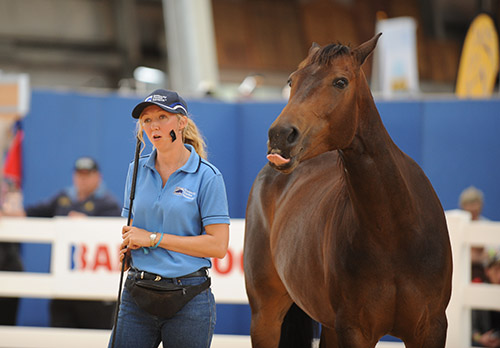

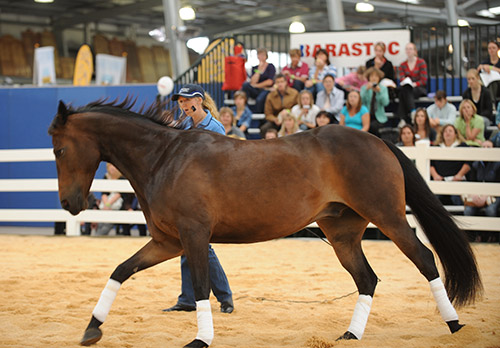

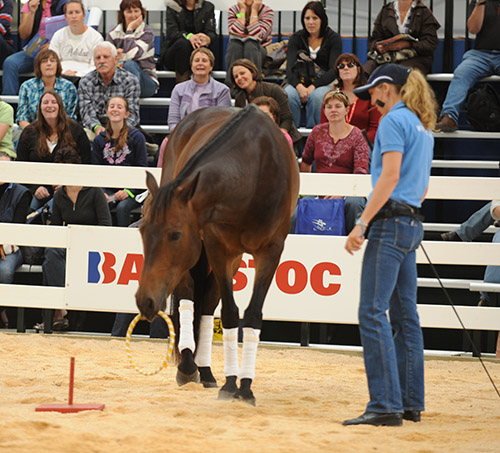
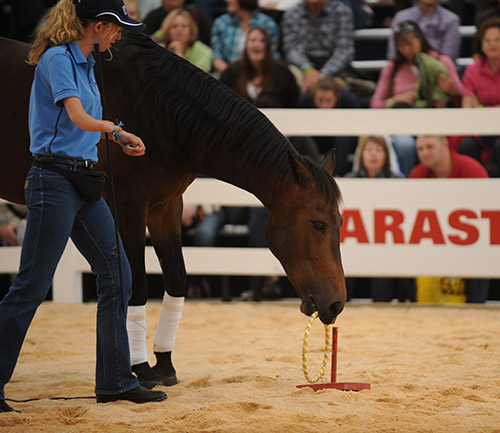
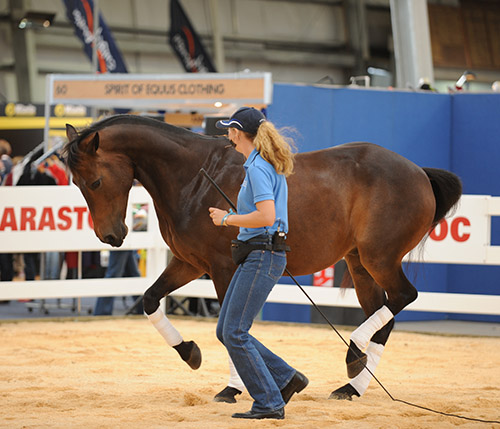
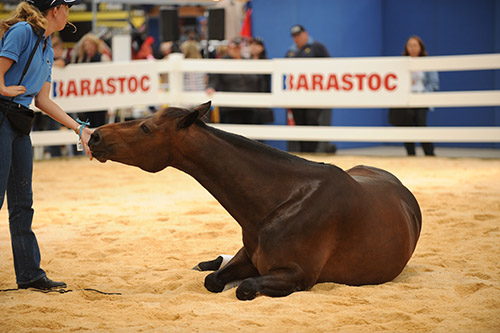
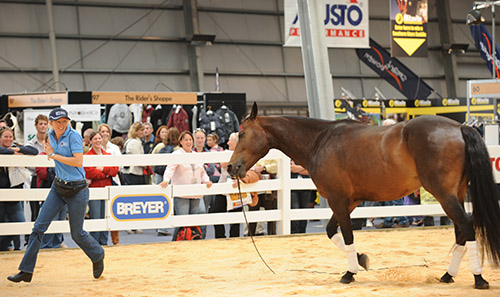
One thought on “Georgia Bruce – Help is only a CLICK away!”
Comments are closed.